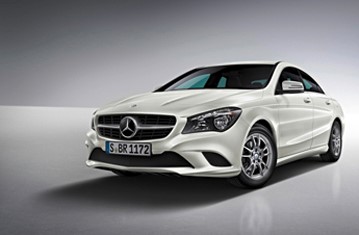Find more information in the General Comments section of the assessment
Find more information in the Rating Validity tab of the assessment
- See More
- See More
- See More
- See More
- Good
- Adequate
- Marginal
- Weak
- Poor
 Passenger
Passenger
 Driver
Driver
 Front Seat
Front Seat
 Car
Car
 Pole
Pole
- Good
- Adequate
- Marginal
- Weak
- Poor


Passenger
outboard
center
Fitted to the vehicle as standard
Not fitted to the test vehicle but available as option
Not Available
-
Infants up to 13 kg
-
Infants and toddlers up to 18 kg
-
Toddlers from 9 to 18 kg
-
Toddlers over 18 kg
Easy
Difficult
Safety critical
Not allowed
| Seat Position | ||||
|---|---|---|---|---|
| Front | 2nd row | |||
| Passenger | Left | center | Right | |
| Maxi Cosi Cabriofix (Belt) | ||||
| Britax Römer King Plus (Belt) | ||||
| Britax Römer Duo Plus (ISOFIX) | ||||
| Britax Römer KidFix (Belt) | ||||
| Maxi Cosi Cabriofix & EasyFix (Belt) | ||||
| Maxi Cosi Cabriofix & EasyFix (ISOFIX) | ||||
| BeSafe iZi Kid X3 ISOfix (ISOFIX) | ||||
| Maxi Cosi Pearl & Familyfix (ISOFIX) | ||||
| Britax Römer KidFix (ISOFIX) | ||||
Easy
Difficult
Safety critical
Not allowed
Based on dummy readings in the dynamic tests, the CLA scored maximum points for its protection of the 1½ year infant. Forward movement of the 3 year dummy, sat in a forward-facing restraint, was not excessive but deceleration of the chest showed that protection of that dummy's chest was fair. Mercedes-Benz's 'CPOD' system is available as an option. The system automatically deactivates the front passenger airbag to allow suitably equipped Mercedes-Benz child seats to be used rearward-facing in that seating position. The system does not work with other child restraints and was not rewarded by Euro NCAP. The dangers of using a rearward-facing restraint in that seating position without first disabling the airbag were clearly explained in the vehicle. Mercedes will update the manual for the CLA to make clear which categories of child restraints are suitable for which seating positions, and the score reflects this updated information. Earlier cars would have received the same star rating as the changes in the manual have only a small influence on the score.
- Good
- Adequate
- Marginal
- Weak
- Poor

Head Impact 17.0 Pts
Pelvis Impact 4.0 Pts
Leg Impact 6.0 Pts
The CLA is equipped with an active bonnet. Sensors detect when a pedestrian has been struck and automatically raise the bonnet to provide greater clearance to the hard structures beneath. Mercedes-Benz showed that the system triggered robustly over a range of speeds and for different statures of pedestrians, so the car was tested with the system deployed. As a result, protection of the head is good over most of the bonnet surface. The protection of pedestrians' legs by the bumper is also good. The front edge of the bonnet also provided predominantly good protection to the pelvis region.
- Good
- Adequate
- Marginal
- Weak
- Poor
| Speed Limitation Function | Manually Set |
| System Name | ESP | |
| Performance | ||
| Vehicle Yaw Rate @ COS + 1.00 s | 3.523% | meets ECE requirements |
| Vehicle Yaw Rate @ COS + 1.75 s | 11.631% | meets ECE requirements |
| Lateral Displacement @ BOS + 1.07 s | 3.12 m | meets ECE requirements |
| Applies To | All seats | ||
| Warning | Driver Seat | Front Passenger(s) | Rear Passenger(s) |
| Visual | |||
| Audible | |||
|
|||
Electronic stability control is standard on the CLA, and met Euro NCAP's test requirements. A seatbelt reminder system covers the front and rear seats while a driver-set speed limitation met the test requirements for such devices.
- Specifications
- Safety Equipment
- Videos
- Advanced Rewards
- Rating Validity
Specifications
Tested Model Mercedes-Benz CLA 200 Urban
Body Type - 4 door coupé
Year Of Publication 2013
Kerb Weight 1430kg
VIN From Which Rating Applies - all CLA-Class and CLA Shooting Brake of the specification tested
Class Small Family Car
Safety Equipment
Note: Other equipment may be available on the vehicle but was not considered in the test year.
Fitted to the vehicle as standard
Fitted to the vehicle as option
Not fitted to the test vehicle but available as option
Not Available
Not Applicable
Videos
Advanced Rewards
Rating Validity







Find more information in the General Comments section of the assessment
 Share
Share









The passenger compartment remained stable in the frontal impact. Dummy data indicated good protection of the knees and femurs of both the driver and the front seat passenger. Mercedes-Benz provided data which showed that a similar level of protection would be provided to occupants of different sizes and to those sat in different positions. The CLA scored maximum points in the side impact barrier test, showing good protection of all body regions. In the more severe side pole impact, dummy readings of rib compression showed that protection of the chest was marginal. The front seats and head restraints provided good protection against whiplash injury in the event of a rear-end collision.